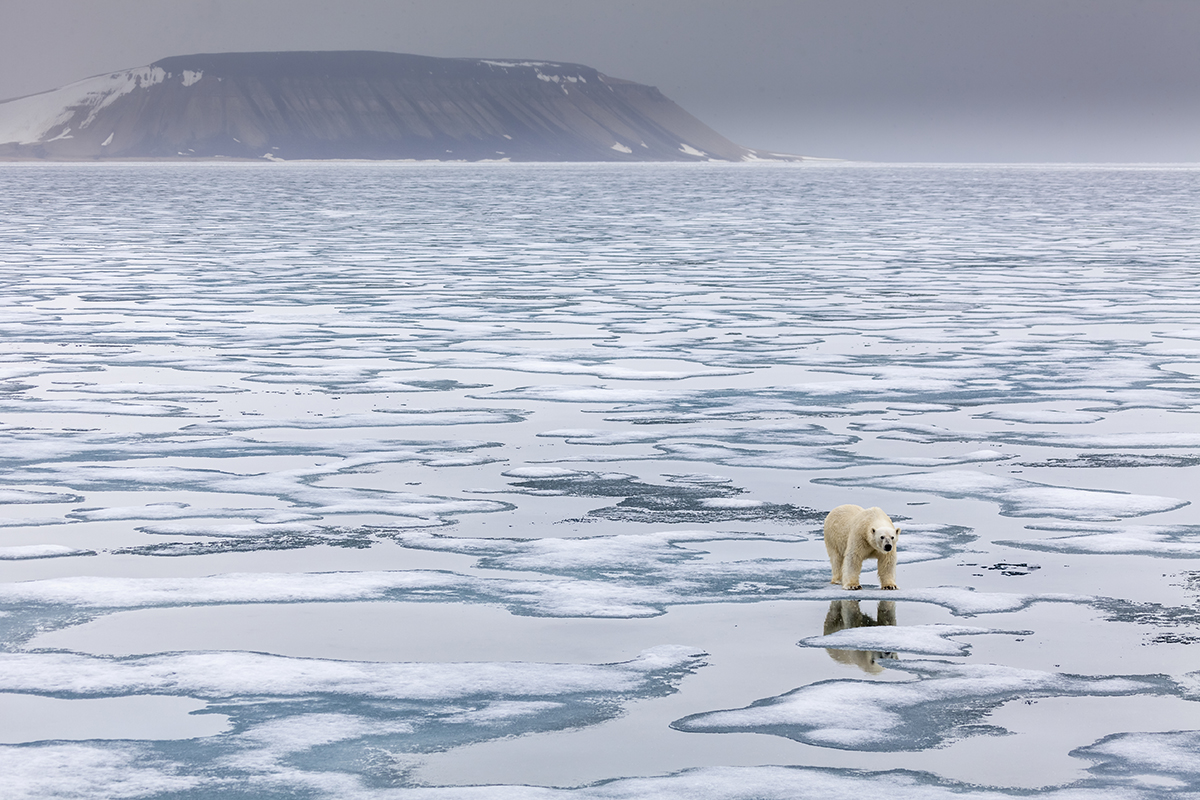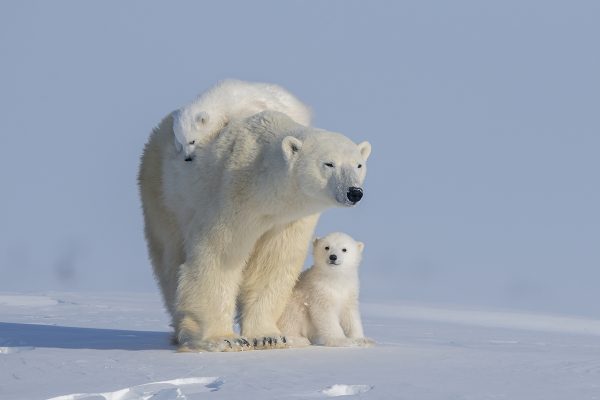The Arctic, a vital but vulnerable ecosystem, is rapidly changing due to global warming. This change directly affects polar bears, who face new threats that did not exist before. Recent research shows that the melting ice is not only destroying their habitat, but is also causing painful lesions in their paws and exposing them to diseases unknown to them. The situation is alarming, and scientists warn that the survival of this iconic species depends on our ability to slow global warming.
Paw injuries
One of the main consequences of climate change for polar bears is damage to their paws. Rising temperatures cause more frequent thawing and refreezing cycles, forming blocks of ice that adhere to the pads of their paws. This causes severe injuries that hinder their mobility, affecting their ability to hunt and move around. In areas such as the Kane Basin and Greenland, more than a third of polar bears have suffered injuries, putting their survival at risk.
The risk of disease
In addition to injuries, climate change is exposing polar bears to new diseases. The loss of sea ice has forced the bears to spend more time on land, where they are in contact with viruses, bacteria and parasites from land animals. These pathogens include toxoplasmosis, brucellosis and canine distemper. Although polar bears are resilient, this new exposure could affect their health and ability to survive.

What will happen to polar bears?
If global warming continues at its current rate, polar bears face an uncertain future. The loss of their natural habitat prevents them from hunting effectively, which could lead to malnutrition and population decline. Without a change in climate policies, their extinction could be a reality in the coming decades. However, if greenhouse gas emissions are reduced, it is possible to mitigate some of these effects and give them a chance to adapt.
5 reasons why polar bears are in danger
- Loss of sea ice: Global warming melts the ice, preventing polar bears from hunting in their natural habitat.
- Paw injuries: The accumulation of ice on their paws causes them lacerations and difficulty moving.
- Exposure to disease: Polar bears are in contact with new pathogens due to rising temperatures and shrinking sea ice.
- Malnutrition: Melting ice reduces hunting opportunities, leading polar bears to spend more time on land without getting enough calories.
- Change in their ecosystem: The alteration of their habitat and that of their prey puts the entire Arctic ecosystem at risk, directly affecting polar bears.
The future of polar bears
Climate change is transforming the Arctic at an alarming rate. Polar bears, which depend on sea ice for hunting, are seeing their habitat melt before their eyes. The survival of this species is intimately linked to our actions to curb global warming. Scientists agree that if we reduce greenhouse gas emissions, we could mitigate these effects and give them a chance to adapt.
Continue your professional education
Climate change is affecting vital ecosystems such as the Arctic, and polar bears are a clear example of the consequences of this crisis. Studying our Master in Environmental Management and Audits will give you the tools you need to understand and address these global challenges. With this knowledge, you will be able to contribute to the search for sustainable solutions, standing out as a professional in a field of great relevance and growth. Prepare your future to lead change and protect what is still at risk, such as the habitat of iconic species like the polar bear.
Source:
Arctic Climate Change Causing Severe Ice Injuries to Polar Bear Paws

